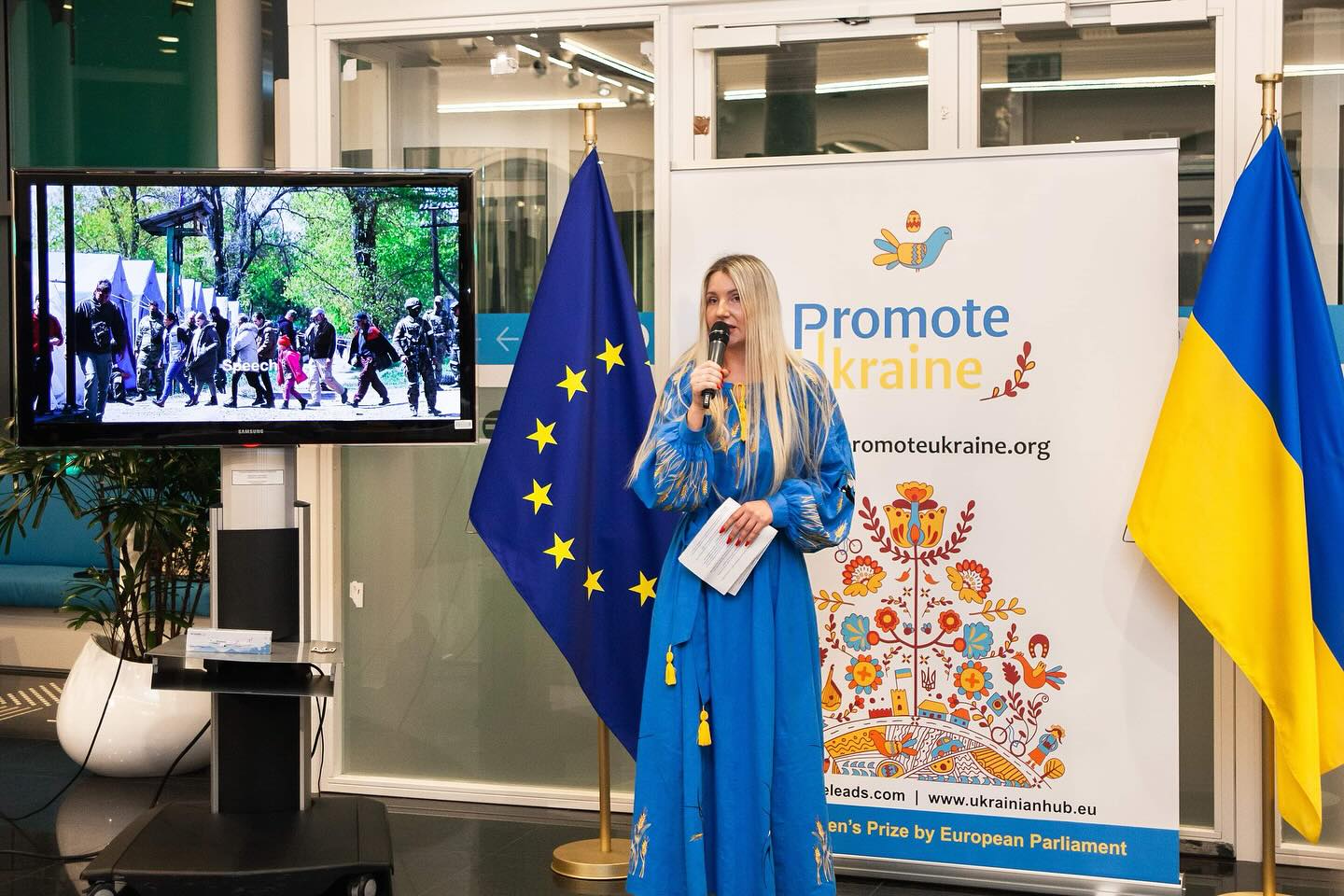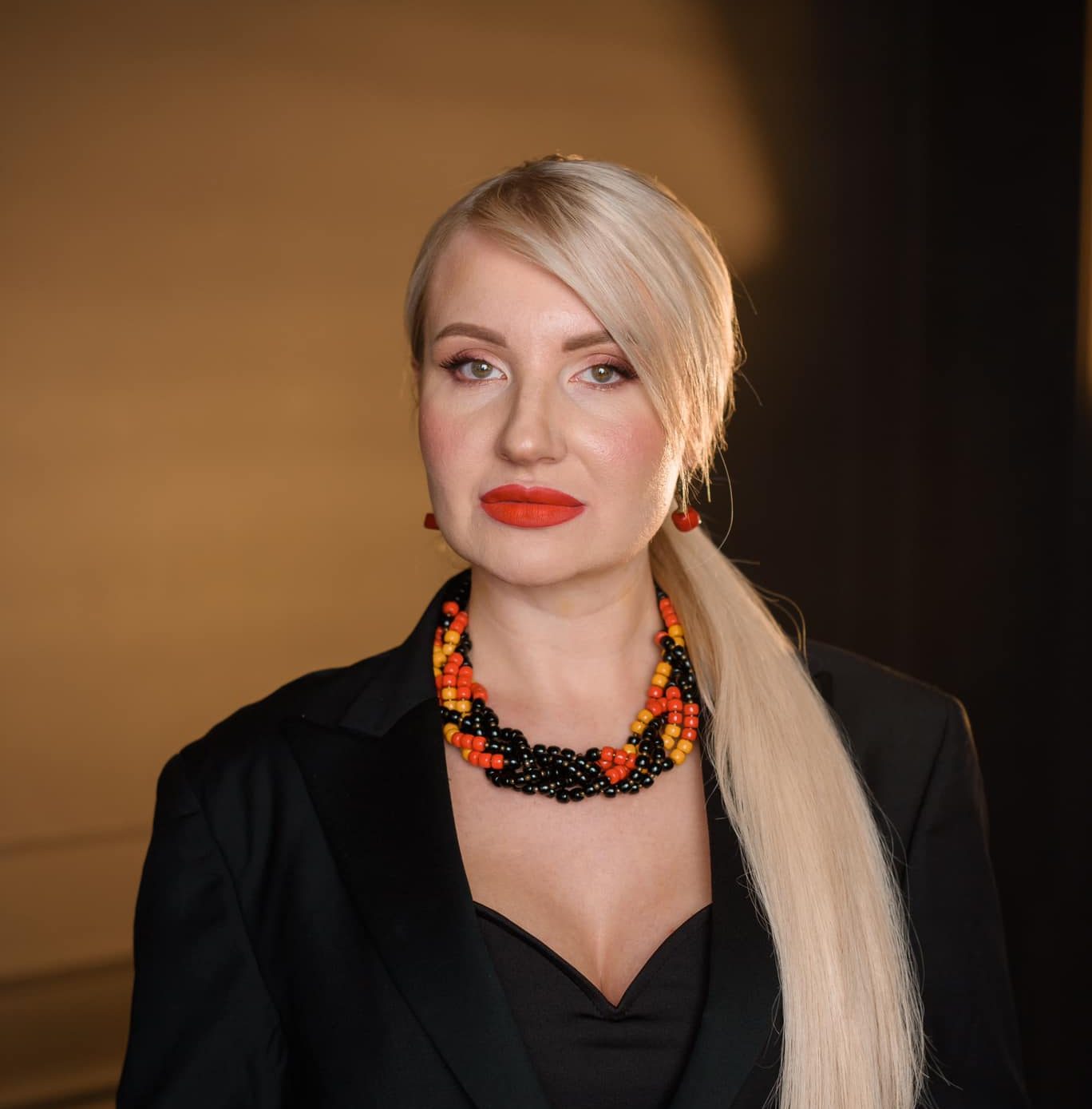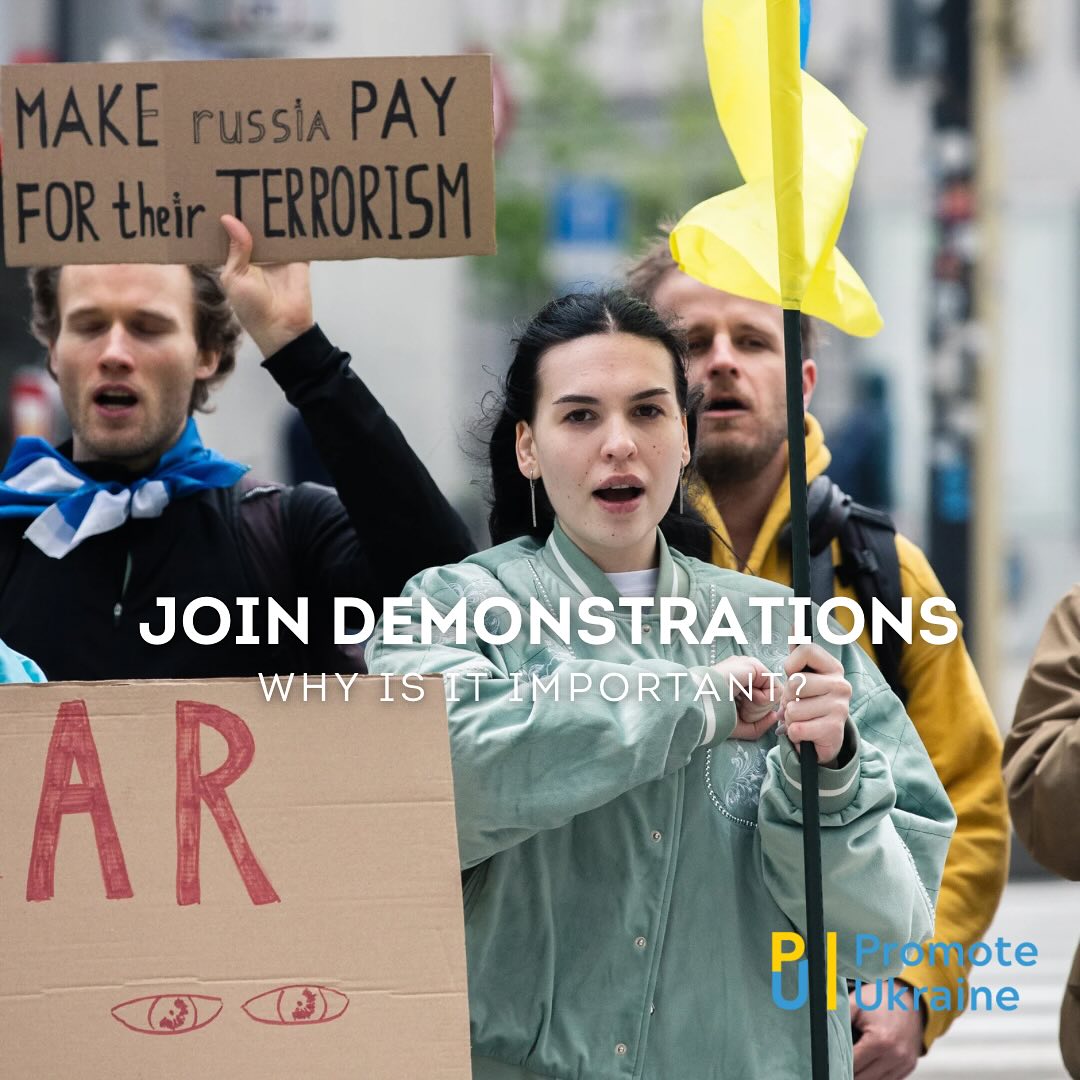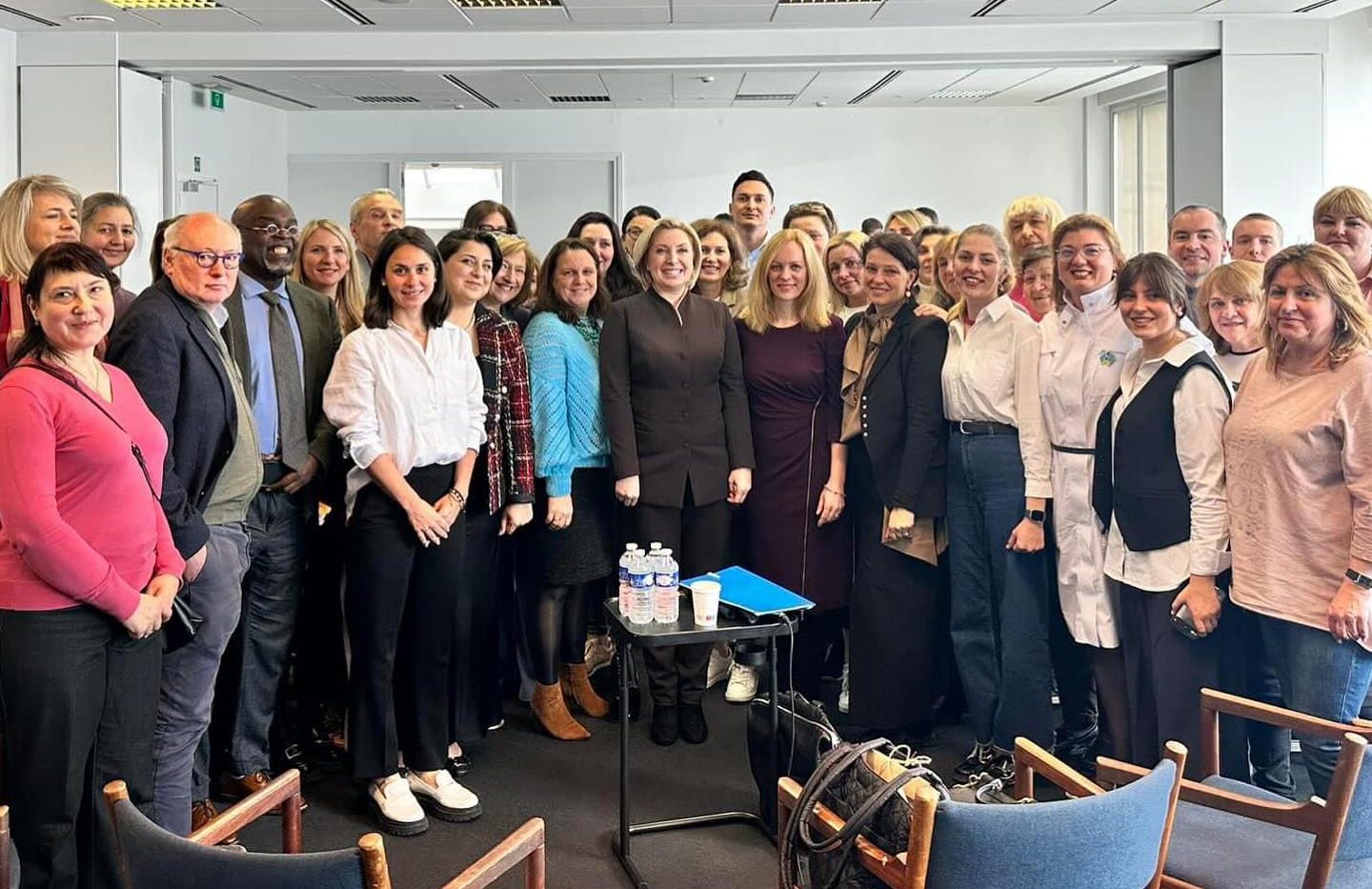Office of Ukraine’s Deputy Prime Minister for European and Euro-Atlantic Integration Olha Stefanishyna
On 30 September, Ukraine applied to the North Atlantic Treaty Organisation (NATO) regarding the start of the negotiation process on future membership in NATO. Ukrainian society has been preparing for this moment for many years. The Revolution of Dignity of 2014 finally determined Ukraine’s strategic course for joining NATO, which later, in February 2019, was enshrined in the Ukrainian Constitution.
All these years Ukraine has been undergoing a fundamental transformation: we have changed from a post-Soviet country to a stable democracy with strong institutions (the stability of which became apparent in the conditions of Russia’s full-scale war). Ukraine’s integration into the Western world took place both on a deep level of shared values and on technical, or sectoral, level. At the same time, public support for Ukraine‘s accession to the Alliance grew, and since the beginning of Russia’s full-scale war, support has reached a historic high.
One of the criteria for the Alliance’s perception of Ukraine as “one of us” is the interoperability of the military formations of Ukraine with those of the NATO Allies. Interoperability is achieved by implementing approaches, practices, principles and standards used by NATO Allies in the Armed Forces of Ukraine (AFU) and other components of the security and defence sector.
As of the end of 2021, some 255 NATO standards and guidance documents have been implemented in Ukraine. And since 24 February, the Armed Forces of Ukraine and other components of the security and defence sector have clearly demonstrated their interoperability with those of NATO member states in real time on the battlefield.
They also gain invaluable combat experience, which is important for both Ukraine and the Allies. As British Secretary of State for Defence Ben Wallace said in an interview with the Evening Standard on 12 October, Russia is no longer a superpower, and at every step the Russian Federation was overestimated and Ukraine was underestimated.
This article contains arguments why Ukraine is already a de facto part of NATO not only civilisationally and politically, but also in military and security terms, using examples of the implementation of NATO approaches, practices, principles, and standards in various activities of the Armed Forces of Ukraine and other components of the security and defence sector. At the same time, the steady assistance of the Allies in the process of reforming and training the Armed Forces is greatly appreciated, as well as the mobilisation of military support with the beginning of a full-scale invasion.
- Defence planning and budgeting
The Ministry of Defence implements the defence resource management model in accordance with NATO approaches and principles. In Ukraine, a comprehensive review of the security and defence sector regularly takes place, based on which the Strategic Defence Bulletin and other conceptual documents in the security and defence sector are developed. Based on the recommendations of NATO experts, the following was developed: A Unified List (Catalog) of the capabilities of the Ministry of Defence, the AFU and other components of the state’s defence forces; Catalog of typical carriers of the capabilities of the AFU and other components of the defence forces. The Ministry of Defence has started another cycle of defence planning based on data from the Unified List (Catalog) and the Catalog of typical carriers, taking into account real and potential military threats and the financial and economic capabilities of the state.
- Defence governance and command and control
The system of defence governance and command and control in the AFU has been transformed from the post-Soviet model to the state-of-art Euro-Atlantic one. Responsibilities between the Ministry of Defence and the General Staff are divided, the positions of the Chief of the General Staff and the Commander-in-Chief of the AFU are separated.The structure of the General Staff of the AFU and operational-strategic and operational-level headquarters corresponds to the typical structures of strategic-operational-level headquarters of the armies of NATO Allies: J-, G-, M-, A- structures.
The command and control bodies are divided by functional areas – command of the joint forces, support forces, medical forces, communications and cyber defence forces, etc.
The force generation and force employment are clearly divided: the function of the force employment of is performed by the Joint Forces Command of the AFU by analogy with the armies of the NATO Allies.
C4ISR components (Command and Control, Communications, Computers, Intelligence, Surveillance and Reconnaissance) are being implemented in the AFU. The Main Situational Centre of Ukraine has been modernised in accordance with Euro-Atlantic practices. The centre processes big data volumes from all state and non-state databases, including from satellites and directly from the event locations. There is also a network of situational centres in the components of the security and defence sector.
- Professionalisation and personnel management
The new military ranks of senior officers, privates and non-commissioned officers and their codification comply with the NATO STANAG 2116. The reserve of candidates for promotion is formed according to the rating principle based on the results of a comprehensive assessment.
Staffing of the AFU with servicemen under contract is close to staffing in the armies of NATO Allies. In particular, military commissariats have been transformed into territorial centres of recruitment and social support. Each of them has a recruiting and staffing department with contract military service selection officers.
Programs of professional military education of non-commissioned officers and officers of the AFU L1-L4 are formed in accordance with the principles and methodology of NATO. In particular, the courses involve studying the procedures for preparing and making operational (Joint Operational Planning Process) and tactical (Military Decision Making Process) decisions according to NATO standards.
With the help of the NATO Allies, the non-commissioned officers (NCO) corps was created – the backbone of the AFU and other components of the defence forces, active training of junior commanders – future military leaders – continues. NCO training centres have been established in each service of the AFU.
- Troops -training
Since, 2021 the training of the defence forces has been taking place according to the NATO approaches, which means according to a single plan and under a single leadership. Based on NATO guidance documents, 13 doctrines and instructions on training and employment of the AFU and other components of the defence forces have been developed; 50 new combat manuals of services, separate branches of troops (forces) for the training and employment of the AFU and other components of the defence forces have been developed and put into effect. The units of the AFU are evaluated and certified according to NATO practices: the first 11 military units of the company-brigade level have already been evaluated.
- Weapons and military equipment
With the help of partners, Soviet samples of weapons and military equipment are gradually being replaced by samples of foreign production. Russian aggression against Ukraine gave a new, extremely powerful impetus to this process.
Currently, Ukraine ranks second in the world in terms of the number of modern anti-tank weapons of foreign production, the existing artillery equipment is being replaced by NATO models of 155 and 105 mm calibers, and the first air defence systems of the NASAMS (USA) and IRIS-T (Germany) types have arrived and more are expected to arrive in the near future. Negotiations on the provision of Ukraine with modern foreign-made aircraft are ongoing. The defence forces use modern systems of communication and automation of the command and control, unmanned aerial vehicles, armoured vehicles, etc.
In the medium term, it is expected that the main old Soviet models of weapons and military equipment will be completely replaced by NATO models.
Thus, the technological compatibility of the AFU and the components of the defence forces with the military formations of the NATO Allies will be achieved.
- Unified logistics system
In Ukraine, the first steps have been taken for the operation of a unified logistics system in accordance with the NATO approaches and principles.
The vertical of the military logistics command and control bodies is functioning. A modern model of logistics support based on the principle of centralised supply of material resources has been developed. It includes creation of unified centres for the logistics provision according to the territorial principle.
Typical organisational and staffing structures of tactical level logistics have been introduced. The Host Nation Support Concept has been implemented. This is a necessary pre-condition for conducting potential NATO operations (missions) in the territory of Ukraine.
During the sixth Ramstein-format meeting on 12 October, Ukraine presented the results of ensuring control over weapons received from international partners. According to Minister of Defence of Ukraine Oleksii Reznikov, NATO’s LOGFAS, along with other tools, is already working. LOGFAS allows the collection, processing, analysis and information distribution to support logistics operations.
- Medical support
A single management body has been created in the AFU – Medical Forces Command, to which medical institutions of the security and defence sector are subordinate. A four-level system of medical and evacuation measures based on the best practices of similar systems of NATO Allies has been implemented in the system of medical support of the AFU.
In the field of medical rehabilitation in Ukraine, high-quality prosthetics services have become available in recent years, thanks in part to the NATO Trust Fund on Medical Rehabilitation in Ukraine. Ukrainian prosthetists were trained by foreign specialists in accordance with the internationally recognised standards of ISPO Category II. A training program for physical and rehabilitation medicine for Ukrainian doctors was created based on the training program of the European Council for Physical and Rehabilitation Medicine of the European Union of Medical Specialists. A number of institutions for the treatment (rehabilitation) of veterans are equipped with the necessary medical equipment.






 UA
UA FR
FR DE
DE




